In some cases, you will have to turn off your solar lights or, they might get damaged. Here, I will show you a few reasons why you should turn off your solar lights from time to time.
- Suppose you have a rainy day and your solar lights did not get enough exposure to sunlight. In that case, you might have to turn the solar lights off; otherwise, the battery can be – drained and damaged. It is also true for places with storms and snow.
- You might want to save batteries for later use. You will have to turn off the switch. It will save you some electricity that you can use later. It is especially- important when there is a lack of sunlight.
- You should turn off the switch if you plan to transport your solar lights somewhere else. They will turn on automatically if they sense darkness while transporting. So, you must turn off the switch beforehand.
- Sometimes, you might want to turn off your lights and enjoy the darkness. If you wish to enjoy the night sky with all those dazzling stars, you most definitely should turn off your solar lights.
Switching solar lights off helps you preserve batteries and use them when needed. It is pretty great for storing, shipping, and moving.
Where is the on/off switch on solar lights?
Manual solar on/off switch is usually located inside the solar light.
As an example, if we took a garden solar light, the switch is under the top cover of the product.
Wall-mounted or flood-type solar lights have the switch under an area where it is hidden from the raindrops.
do you take the plastic off solar lights?
Yes, when it comes to garden solar lights, you need to take off the plastic cover in order to reach the manual switch.
The exact location is mentioned in the manual as well.
However, I have seen that cheap solar lights do not come with manuals.
If that happens to you, it’s better to check the device can be separated without removing the nuts and bolts. Normally, the switch is located in a hidden place.
The below photo tutorial will show you how I remove my garden solar light cover in order to find the hidden manual switch.
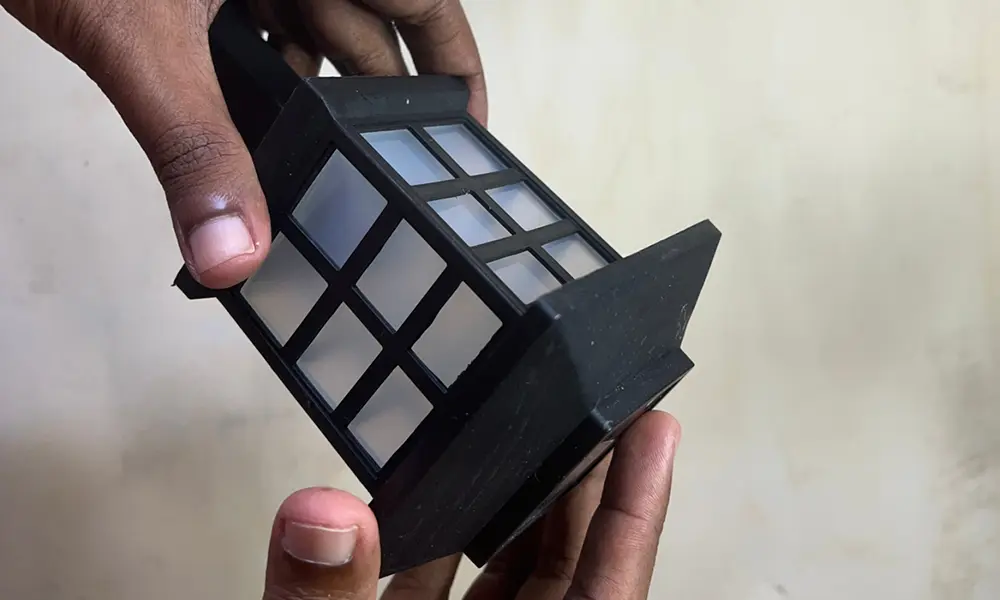
Usually, the garden solar light’s switch is located inside the cover.
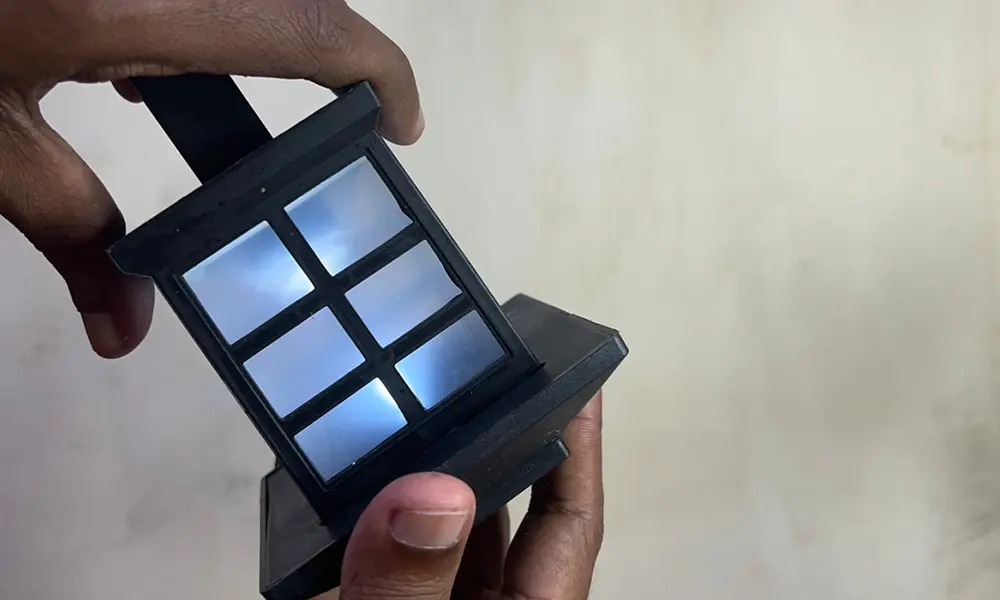
The top plastic cover is mounted without any nuts. So we can remove it easily.
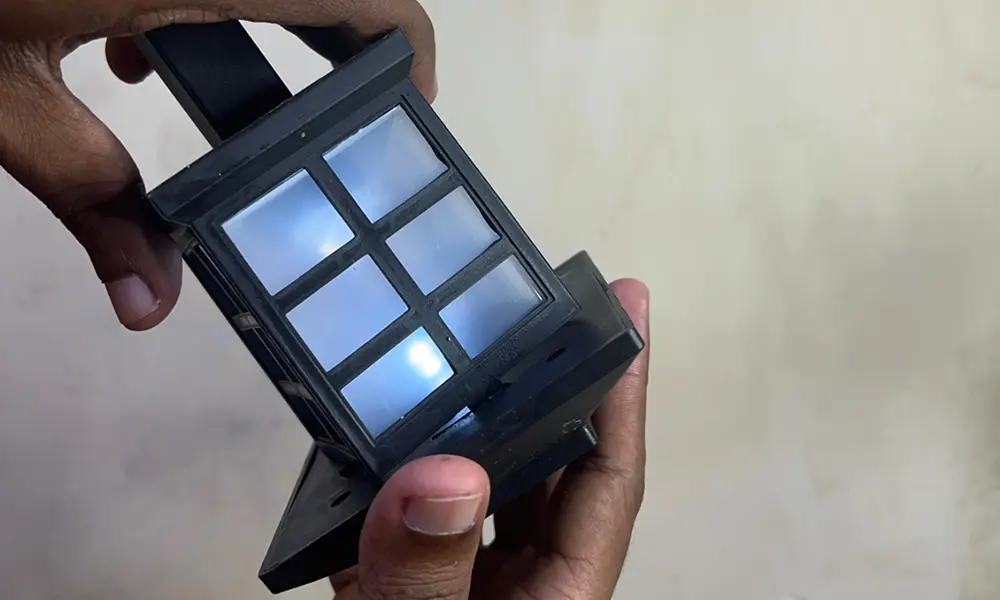
As you can see in the above image, rotate the cover to remove it.
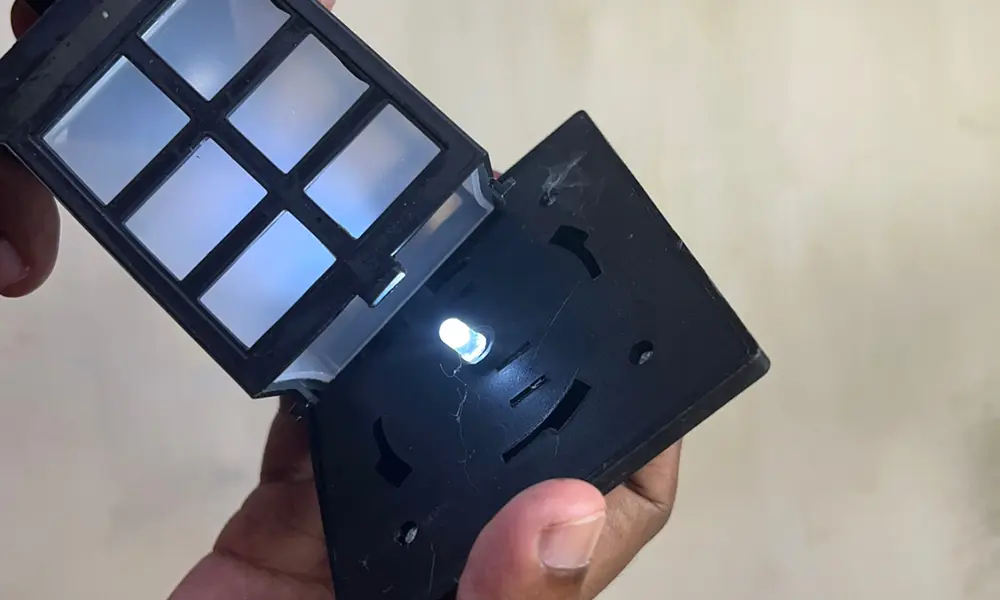
Now you can see the removed top cover. There is only one solar light in this product.
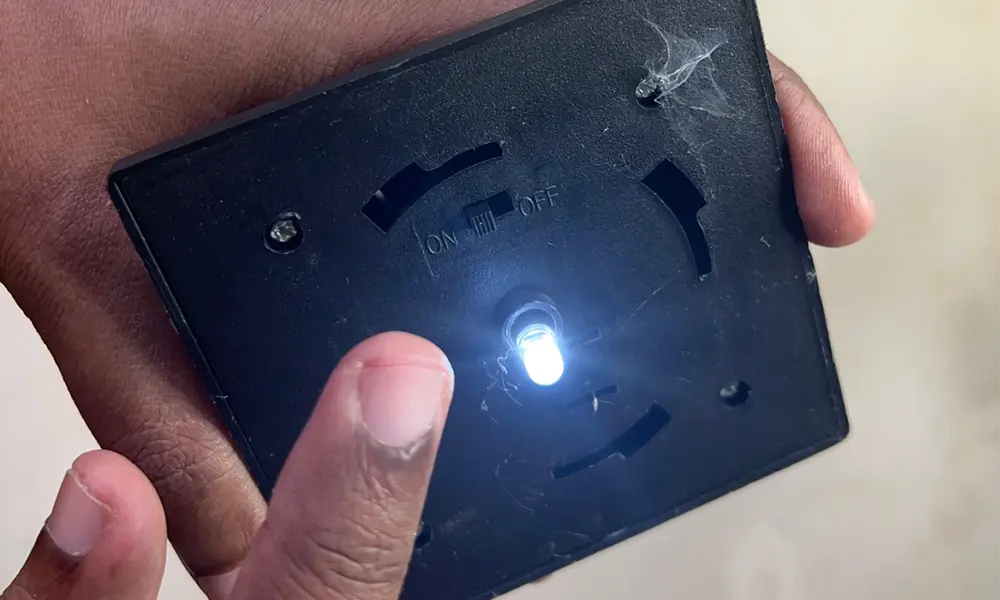
Okay, now you can see the manual switch. Turn it ON if the light is a new one.
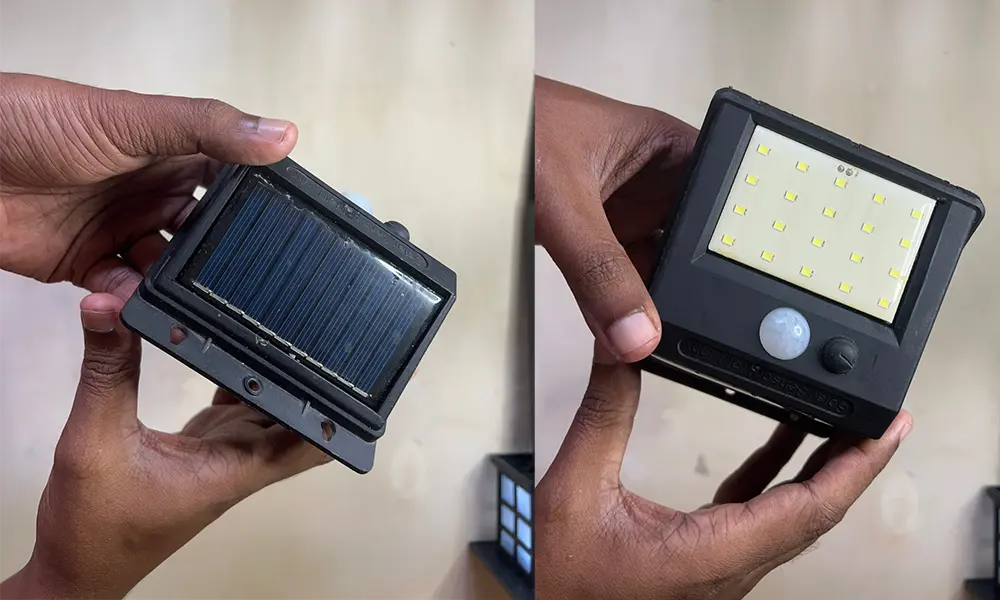
for demonstration purposes, I have added these photographs from a motion-activated solar light as well.
This light does not have a manual switch.
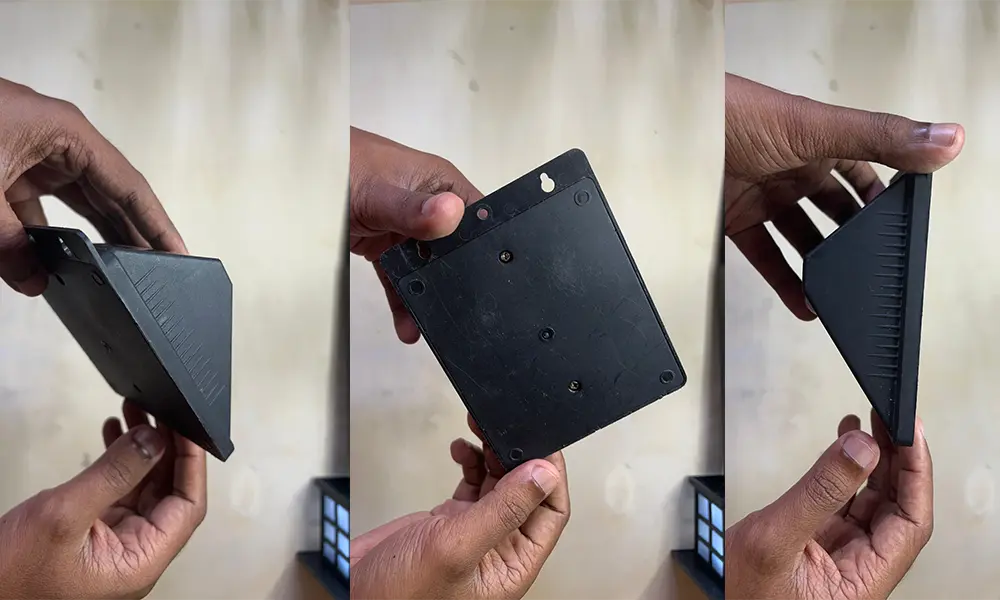
With careful inspection, I did not find any hidden compartment of these. Everything sealed. Light seems to work only in an automated manner.
How do solar lights turn ON and OFF?
A solar light operation mechanism is pretty simple. It is- powered by sunlight. It takes energy from the sun and turns it into electricity that powers up its built-in LED light. Let us dive into a little more detail.
Solar light has a simple circuit, somewhat similar to a flashlight. Its battery terminals are- connected to the LED with a simple loop circuit. There is another circuit that connects the solar panel to the battery terminals.
Inside a solar light, there is a sensor that can detect night. Most of the time, the circuit uses the solar panel as the sensor as well.
It turns the LED light ON. Similarly, it can understand when the sun is up and the time to charge the battery. We will go into a little more detail on how solar light circuits works.
This is how your solar light turns on:
- Firstly, solar LED light requires a minimum voltage to turn on. Generally, the threshold is 3.5 volts. There are two circuits in solar light. One of the two is constantly providing electricity to the bulb. Let’s assume circuit A passes 1.2-volts current and circuit B passes 3.7 volts; meaning, circuit B passes enough voltage to turn your light ON.
- When the sun is out, the solar panel transmits current through circuit A which is in operation now and provides 1.2 volts. This voltage is enough to charge the solar battery but not enough to lighten the led.
- Finally, when the sun goes off, the solar panel no longer transmits current to circuit A, and it shuts down because of the drop in voltage. Now, circuit B is triggered. It draws current from the battery and provides 3.7 volts. As it exceeds the minimum threshold, the LED light turns on.
This is how your solar light automatically turns on in the morning and off at the evening. It can be a little intimidating, but it is a simple process.
Do solar lights have to be turned ON?
Yes. After buying solar lights, you should unpack them and turn the ON switch. Now do not use your solar lights right away. Let them fully charge for the whole day. When the sun goes down, turn the switch off.
Do not use the lights on the first night. Then charge them again the next day. Now your lights are ready for the following night. By doing this, you will maximize your solar battery, and you will get light the whole night.
You will have to turn the switch ON when you set them up for the first time. Check whether your lights have a turn-on/off button. If so, turn it on. Sometimes they don’t have any.
However, you do not have to manually- turn on your solar lights regularly. They have sensors inside, and they know when to turn them on and off. Manufacturers have designed solar lights to turn on/off automatically.
Do solar lights charge when turned off?
It is not necessary to switch ON to charge your solar lights. They can charge themselves even when the switch is- turned off.
But, keep it ON unless you want to switch it off for specific reasons. You should read the instruction manual that comes with your lights.
What problems can arise from the on and off switch?
Many new users do not realize that their solar lights have an on/off switch that needs to turn on. The light is- turned off while they are in the package- you have to turn it on after unpacking.
If you plan to set them in a higher place- it can be a problem to turn them on/off regularly. You should turn them on before installing them. Press the switch with care so that they do not get physically damaged.
What to do solar lights on/off switch not working problem?
The first thing you need to check is the battery level. Most of the time, users miss understand their device due to low battery as the system failure.
You can turn your solar light switch into an ON state and then keep it in the direct sun for more than 8 hours to fully charge. Then try again to see if your solar lights are working in dark.
If this fails, we can think that the internal system is faulty.
If your solar light is new – This can be the reason
Rarely, new lights can have faulty switches. You can test this by dissembling your solar light and narrowing down the two wires coming from the switch.
Then try to short the wires and test if the light turns ON when it is dark.
If your solar light is old – This can be the reason
Most of the time, the battery can be dead. Also, if the waterproofing is not good, the internal parts can be degraded rapidly causing loose wires.
To check, you need to dissemble your solar light and check if there are any loose wires. If not, check the battery power using a voltmeter or multimeter.
Above steps will help you to narrow down the cause correctly.

Eng. Matthew Joseph Nandirio is the Founder of walkingsolar.
After graduating from the University of Houston in 2002, matt started working as a Solar Electrical Engineer for several multi-national solar energy companies.
He has a wide range of experiences including solar system requirement analysis, planning, maintaining, debugging and even solar device development through research.
He now shares his 20 years of expertise through his articles on the walkingsolar website.
Further, he is also the author of two books on Solar Technology, “Solar Power for Villages” and “DIY Solar System for Dummies”.
